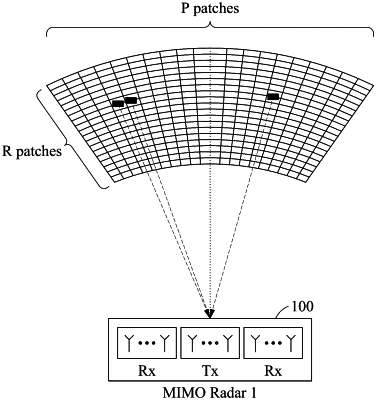| CPC G01S 13/89 (2013.01) [G01S 13/42 (2013.01); G01S 13/72 (2013.01); G01S 13/87 (2013.01); G01S 13/931 (2013.01)] | 18 Claims |

|
1. A radar image generation method comprising:
receiving a received signal received at each of radars that are distributed and arranged;
generating an input signal by processing the received signal;
generating a support vector that represents sparsity for sparsity modeling based on the input signal;
updating the support vector;
updating a coefficient corresponding to the support vector; and
generating a radar image based on the support vector and the coefficient,
wherein the generating of the input signal comprises:
generating a first de-ramped signal by de-ramping the received signal;
generating a second de-ramped signal by processing the first de-ramped signal; and
reformulating the second de-ramped signal based on a measurement area,
wherein the updating of the support vector comprises computing a support update matrix for updating the support vector,
wherein the computing of the support update matrix comprises initializing the support vector.
|